WebQuest
Tasks
To take the advantage of this webquest to the fullest, please
complete all tasks below, including the before and after sections.
WebQuest
Tarefas
Para aproveitar ao máximo esta webquest, por favor,
conclui todas as tarefas abaixo, incluindo as secções antes e depois.

Before the Tasks
Previous knowledge and assumptionsBefore starting any other task, write down your biases.
When you hear someone refer to autism, what comes to mind? What are the behaviours you associate with it and expect from an autistic person?
What about attention deficit and hyperactivity? How would you describe someone you'd associate with it and its behaviors?
Antes das Tarefas
Conhecimento prévio e suposiçõesAntes de iniciar qualquer outra tarefa, anota os teus preconceitos.
Quando ouves alguém a referir autismo, o que tevem à mente? Quais são os comportamentos que associas a este e esperas de uma pessoa autista?
E quanto ao défice de atenção e hiperatividade? Como descreverias alguém que associarias a estes e os comportamentos desta?

Task 1
Understand the neurodivergenciesNow that you've written down your assumptions, it's time to start the learning process and the first step is to understand the many characteristics and how they present themselves.
However, when learning about any disability, it is important to understand both sides of it: both the existing clinical documentation and the first-person accounts.
Tarefa 1
Compreende as neurodivergênciasAgora que anotaste as tuas suposições, está na hora de iniciar o processo de aprendizagem e o primeiro passo é entender as muitas características e como estas se apresentam.
No entanto, ao aprender sobre qualquer deficiência, é importante entender ambos os lados: tanto a documentação clínica existente como os relatos em primeira pessoa.

Task 2
Understand the overlapHaving the list of symptoms and characteristics of both neurodivergencies, it is now possible to compare and understand their overlap, their differences and how they work together.
Why is understanding this important? Because such a mix of very similar and very different characteristics can have unpredictable results on how the neurodivergencies present themselves.
Tarefa 2
Compreende a sobreposiçãoTendo a lista de sintomas e características de ambos as neurodivergências, é agora possível comparar e entender a sua sobreposição, as suas diferenças e como funcionam em conjunto.
Por que é que entender isso é tão importante? Porque essa mistura de características muito semelhantes e muito diferentes pode ter resultados imprevisíveis sobre como as neurodivergências se apresentam.

After the Tasks
Challenge your biasesFinally, now that you understand how each neurodivergency works, from its inner workings to how it presents to outsiders, you can look back to the notes you took before you began and compare them to what you now know.
How does it compare? Does you new knowledge change the way you perceive the behaviors of the people around you? Do you see the world differently now? Do you actually know people who you think might be neurodivergent and that you'd never would have suspected before?
Depois das Tarefas
Desafia os teus preconceitosFinalmente, agora que entendse como cada neurodivergência funciona, desde seu funcionamento interno até como se apresenta a pessoas de fora, podes olhar para as anotações que fizeste antes de começar e compará-las com o que sabes agora.
Como é que se comparam? O teu novo conhecimento muda a maneira como percebes os comportamentos das pessoas no teu redor? Vês o mundo de forma diferente agora? Afinal conheces pessoas que achas que podem ser neurodivergentes e das quais nunca terias suspeitado antes?
WebQuest
Process
To complete the tasks previously defined, follow the process
guide below, that explains the various steps, using the referenced resources.
WebQuest
Processos
Para concluir as tarefas definidas anteriormente, segue o guia de processo
abaixo, que explica as várias etapas, usando os recursos referidos.
-

1. ASD Characteristics - Part 1
Using resources from Group 1.1, list the characteristics you can find for Autism Spectrum Disorder. These resources correspond to official documents as well as manuals for diagnosis.
It's important to consider the sources of the information we consume when talking about this. Not all autistic organizations are built the same and it's important that, even when using official sources, we always try to read from organizations by autistics for autistics, rather than content written by neurotypical individuals.1. Características de PEA - Parte 1
Usando recursos do Grupo 1.1, faz uma lista das características que encontras para a Perturbação do Espectro do Autismo. Esses recursos correspondem a documentos oficiais, bem como manuais de diagnóstico.
É importante considerar as fontes das informações que consumimos ao falarmos sobre isto. Nem todas as organizações autistas são construídas da mesma forma e é importante que, mesmo usando fontes oficiais, tentemos sempre ler de organizações de autistas para autistas, em vez de conteúdo escrito por indivíduos neurotípicos. -

2. ASD Characteristics - Part 2
Now that you have the official version of the characteristics, it is time to learn from the first-person accounts of individuals with ASD, using the resources in Group 1.2.
Why is this important if we are already prioritizing sources by autistics? Because when dealing with neurodivergent individuals, there are always variations on how these characteristics present themselves. Also, many aspects described in those lists come from an outside perspective rather than how the individual experiences them. Lastly, many organizations for autistics advocate and share very controversial information that is important to understand from the perspective of people who might be affected by it.
Additionally, when adding to the previously written list, remember that different groups of people can display variations of the same characteristics.2. Características de PEA - Parte 2
Agora que tens a versão oficial das características, está na hora de aprender com histórias em primeira pessoa de indivíduos com PEA, usando os recursos do Grupo 1.2.
Por que é que isso é importante se já estamos a priorizar fontes por autistas? Porque, ao lidar com pessoas neurodivergentes, há sempre variações de como as características se apresentam. Além disso, muitos aspectos descritos nessas listas vêm de uma perspectiva externa, e não de como o indivíduo os vivencia. Por fim, muitas organizações para autistas defendem e partilham informações muito controversas, as quais é importante entender do ponto de vista das pessoas que podem ser afetadas por elas.
Além disso, ao adicionar à lista escrita anteriormente, lembra-te que diferentes grupos de pessoas podem exibir variações das mesmas características. -

3. ADHD Characteristics - Part 1
Now that the ASD characteristics have been gathered, you must repeat these two steps for the Attention Deficit and Hyperactivity Disorder. This time focusing on the resources from Group 1.3 to create the beginning of the second list.
Again, you need to begin by learning the characteristics that can be found in official documentation, diagnostic manuals and organization's pages and, again, you must focus on ADHD organizations that include people with ADHD, when possible.3. Características PHDA - Parte 1
Agora que as características da PEA foram reunidas, é necessário repetires esses dois passos para a Perturbação de Hiperatividade e Défice de Atenção. Desta vez focando nos recursos do Grupo 1.3 para criar o início da segunda lista.
Novamente, precisas de começar por aprender as características que podem ser encontradas na documentação oficial, manuais de diagnóstico e páginas de organizações e, novamente, deves-te concentrar em organizações de PHDA que incluam pessoas com PHDA, quando for possível. -

4. ADHD Characteristics - Part 2
Finally, the last required step for the completion of the first task is to list the characteristics from the perspective of ADHD individuals, making sure to use the information provide by the resources in Group 1.4.
As with ASD, this is a very important step that will alert you to how both the attention deficit and the hyperactivity can present themselves very differently from person to person, as well as how they can appear to others compared to how they feel to the individuals.
Additionally, much like with ASD, various ADHD characteristics can appear in different and unexpected ways for different groups of people.4. Características PHDA - Parte 2
Por fim, a última etapa obrigatória para a conclusão da primeira tarefa é listar as características do ponto de vista dos indivíduos com PHDA, certificando-te que usas as informações fornecidas pelos recursos do Grupo 1.4.< br>Assim como para a PEA, este é um passo muito importante que irá alertar-te para como tanto o défice de atenção quanto a hiperatividade podem apresentar-se de maneiras muito diferente de pessoa para pessoa, bem como podem parecer para outros em comparação com o que os indivíduos sentem.
Além disso, assim como para a PEA, várias características da PHDA podem aparecer de maneiras diferentes e inesperadas para diferentes grupos de pessoas. -

5. (Optional) Show Your ASD Knowledge
Now that you understand Autism Spectrum Disorder, a good exercise to test that knowledge is to think about how the term spectrum relates to its characteristics, with how they could be grouped, as well as to the now going out of use labels of high and low functioning.
5. (Opcional) Mostra o teu conhecimento de PEA
Agora que entendes a Perturbação do Espectro do Autismo, um bom exercício para testar esse conhecimento é pensar em como o termo espectro se relaciona com suas características, com a maneira como estas podem ser agrupadas, bem como com os rótulos que cada vez mais entram em desuso de alto e baixo funcionamento.
-

6. (Optional) Show Your ADHD Knowledge
Some people with Attention Deficit and Hyperactivity Disorder are of the opinion that the name of this disorder does not accurately reflect its characteristics. Many have suggested names and even created petitions about it. To test your recently acquired knowledge about ADHD, suggest a new name that you think is more accurate, justifying your choice.
6. (Opcional) Mostra o teu conhecimento de PHDA
Algumas pessoas com Perturbação de Hiperatividade e Défice de Atenção são da opinião de que o nome desta perturbação não reflete com precisão as suas características. Muitos sugeriram nomes e até criaram petições sobre isso. Para testares adquiridos os teus conhecimentos recentemente adquiridos sobre a PHDA, sugere um novo nome que consideres mais preciso, justificando a tua escolha.
-

1. ADHD and ASD Similarities
Now that you've learned about both Autism Spectrum Disorder and Attention Deficit and Hyperactivity Disorder, you can begin the second task of this webquest: understanding how they work as comorbidities.
The first step of it is to understand and list the characteristics that do overlap between both disorders. For this, use the information gathered previously as well as the resources from Group 2.1.1. Semelhanças entre PHDA e PEA
Agora que você aprendeu sobre a Perturbação do Espectro do Autismo e a Perturbação de Hiperatividade e Défice de Atenção, podes começar a segunda tarefa desta webquest: entender como estas funcionam enquanto comorbidades.
O primeiro passo é entender e listar as características que se sobrepõem entre as duas perturbações. Para isso, usa as informações recolhidas anteriormente, bem como os recursos do Grupo 2.1. -

2. ADHD and ASD Differences
Once you know the characteristics that overlap, you can extrapolate and list the ones that do not. Additionally, if you choose to dive even deeper into this step, you can supplement the previous information with the same resources of Group 2.1.
2. Diferenças entre PHDA e PEA
Depois de conheceres as características que se sobrepõem, podes extrapolar e listar as que não se sobrepõem. Para além disso, se optares por aprofundar ainda mais neste passo, podes complementar as informações anteriores com os mesmos recursos do Grupo 2.1.
-

3. Comorbidities and Their Presentation
Finally, it's time for the last step of the webquest's tasks. Now, and using the information from the previous two steps, you can try and understand how ASD and ADHD work together, how some characteristics get more intense while others seem to cancel out.
3. Comorbidades e sua apresentação
Finalmente, está na hora do último passo nas tarefas da webquest. Agora, e usando as informações das duas etapas anteriores, podes tentar entender como a PEA e a PHDA funcionam juntas, como algumas características ficam mais intensas enquanto outras parecem anular-se.
WebQuest
Resources
The complete list of resources that will be useful to complete
and understand the tasks previously detailed, as well as their steps.
WebQuest
Recursos
A lista completa de recursos que serão úteis para a conclusão
e compreensão das tarefas detalhadas anteriormente, bem como as suas etapas.
Group 1.1
- Diagnostic and Statistical Manual of Mental Disorders, Fifth Edition (DSM-5) by American Psychiatric Association - Pages 50 to 59
- Autism Spectrum Disorder, National Institute of Mental Health
- Autism, National Health Services
- Autism Spectrum Disorder (ASD), Centers for Disease Control and Prevention
Group 1.2
- @connordewolfe (tiktok) | @connor.dewolfe (instagram)
- @ellaellaw (tiktok)
- @actuallyautisticalien (instagram)
- Ethan Lisi, "What it's really like to have autism" (youtube)
- Kate Kahle, "Behind the Mask: Autism for Women and Girls" (youtube)
- Jubilee, "Do All Autistic People Think The Same?" (youtube)
- Anthony Padilla, "I spent a day with AUTISTIC PEOPLE" (youtube)
Group 1.3
- Diagnostic and Statistical Manual of Mental Disorders, Fifth Edition (DSM-5) by American Psychiatric Association - Pages 59 to 66
- Attention-Deficit/Hyperactivity Disorder, National Institute of Mental Health
- Attention deficit hyperactivity disorder (ADHD), National Health Services
- Attention-Deficit / Hyperactivity Disorder (ADHD), Centers for Disease Control and Prevention
Group 1.4
- @connordewolfe (tiktok) | @connor.dewolfe (instagram)
- @katiesuehue (tiktok)
- @adhdcouple (tiktok) | @adhd_couple (instagram)
- How to Adhd (youtube)
- Rowan Ellis, "How I Got Diagnosed With ADHD at 29" (youtube)
- Anthony Padilla, "I spent a day with people w/ ADHD" (youtube)
Group 2.1
- ADHD and Coexisting Conditions, CHADD - Children and Adults with Attention Deficit/ Hyperactivity Disorder
- ADHD and Autism Spectrum Disorder, CHADD - Children and Adults with Attention Deficit/ Hyperactivity Disorder
- "Are ADHD and ASD a Continuum? A Comparison of Pathophysiological Similarities Between the Disorders" (Kern et al., 2012)
- @connordewolfe - Comorbidities (tiktok)
- @connordewolfe - Similarities and Differences (tiktok)
- How to ADHD, "Do You Have ADHD, Something Else, Or... Both?? (ft Comorbidities)" (youtube)
- How to ADHD, "ADHD and Comorbidities (ft. Dr. Patrick LaCount)" (youtube)
- Purple Ella, "Whats The Difference Between ADHD & Autism" (youtube)
Grupo 1.1
- Manual Diagnóstico e Estatístico de Transtorno Mentais, 5ª Edição (DSM-5) pela Associação Americana de Psiquiatria - Páginas 50 a 59
- Autismo, CUF
- Associação Voz do Autista | @vozdoautista (instagram) | Voz do Autista (youtube)
Grupo 1.2
- @divergencias_podcast (instagram) | Divergências (spotify) | Divergências (google podcast)
- Associação Voz do Autista | @vozdoautista (instagram) | Voz do Autista (youtube)
- Lua: Autista e especial | #SÓQNÃO (youtube)
- O invisível: Autismo (PEA) e Educação Física, Lua
- No mundo da Lua (blog, secção sobre Autismo e Deficiência)
- @o_cerebro_autista (instagram)
- "Não tenho que parecer autista", Carolina Lopes Rodrigues
Grupo 1.3
- Manual Diagnóstico e Estatístico de Transtorno Mentais, 5ª Edição (DSM-5) pela Associação Americana de Psiquiatria - Páginas 59 a 66
- Portal da Hiperatividade/ Défice de Atenção, Dr. Octávio Moura
- Hiperatividade e défice de atenção, Hospital da Luz
- PHDA, Portal SaudeMental.pt
Grupo 1.4
- @divergencias_podcast (instagram) | Divergências (spotify) | Divergências (google podcast)
- Como se vive com perturbação da hiperatividade e défice de atenção?, Comunidade Cultura e Arte
Grupo 2.1
- @divergencias_podcast (instagram) | Divergências (spotify) | Divergências (google podcast)
WebQuest
Evaluation
When you're done with everything,
the points below will be used when evaluating your work.
WebQuest
Avaliação
Quando terminares tudo,
os pontos abaixo serão usados para avaliar o teu trabalho.
| Task/ Step | Weight |
|---|---|
| 1.1 + 1.2 | 20% |
| 1.3 + 1.4 | 20% |
| 1.5 | 5% |
| 1.6 | 5% |
| 2.1 + 2.2 | 20% |
| 2.3 | 20% |
| Before + After | 10% |
This webquest can be completed either individually or in group. The criteria below can be used in both situations. Remember, however, that the focus is in introspection and learning outside of a more formal environment. This means the criteria was done so it can be used for self-evaluation, without outside guidance.
Additionally, remember to complete everything in the previous sections before advancing to this one, as it will list the criteria for every step and might spoil a step further down, if you haven't finished it.
1.1 and 1.2:
- List a minimum of 2 characteristics/ behaviours for each of the categories: Inhibitory Control, Working Memory, Cognitive Flexibility, Planning, Attention, Emotion Regulation;
1.3 and 1.4:
- List a minimum of 12 characteristics/ behaviours;
- Have only a maximum of 6 characteristics be present on the DSM-5;
1.5:
- Characteristics should be grouped in categories similar to the ones mentioned in the criteria for 1.1/ 1.2;
- Mention that each of these categories can be present (or not) according to a spectrum of its own;
- Previous point should lead to the conclusion that ASD is not just one spectrum but a collection of many;
- Mention the relation between these multiple spectrums and the functioning labels, and that these are dependent on where each of the categories is on its spectrum;
- Previous point leads to the conclusion that the functioning labels are related to an external point of view and therefore not an accurate descriptor.
1.6:
- Suggested name is not just a list of symptoms;
- Draws upon ADHD characteristics/ behaviours to justify the name;
- Relate (most of) the characteristics to a single source that covers them (such as executive dysfunction or the difficulty controlling attention);
- Distinguish between the usage of disorder and neurodivergency.
2.1 and 2.2:
- Use all elements from both list to create the lists similarities and differences;
- Add a minimum of 2 other elements by using the recommended resources.
2.3:
- Mention the similarities and differences;
- Extrapolate the characteristics that can get intensified - the similar ones - and the ones that might get nullified - the different and opposite ones;
- Mention that there can be an overlap in the characteristics without there being enough behaviours to diagnose both neurodivergencies. Meaning someone with ADHD can have a few ASD characteristics and vice-versa.
Before and After:
- The goal of these tasks is to inspire introspection, so the only criteria for them is if they were done, both the listing of assumptions and later on their analysis.
| Tarefas/ Passos | Peso |
|---|---|
| 1.1 + 1.2 | 20% |
| 1.3 + 1.4 | 20% |
| 1.5 | 5% |
| 1.6 | 5% |
| 2.1 + 2.2 | 20% |
| 2.3 | 20% |
| Antes + Depois | 10% |
Esta webquest pode ser concluída individualmente ou em grupo. Os critérios abaixo podem ser usados em ambas as situações. Lembra-te, no entanto, que o foco está na introspecção e na aprendizagem fora de um ambiente mais formal. Isso significa que os critérios foram feitos para que possam ser utilizados para autoavaliação, sem orientação externa.
Além disso, lembra-te de concluir tudo nas secções anteriores antes de avançar para esta, pois irá listar os critérios para cada etapa e poderá arruinar uma etapa mais adiante, se não tiveres concluído.
1.1 e 1.2:
- Lista um mínimo de 2 características/ comportamentos para cada uma das categorias: Controlo Inibitório, Memória de Trabalho, Flexibilidade Cognitiva, Planeamento, Atenção, Regulação Emocional;
1.3 e 1.4:
- Lista um mínimo de 12 características/ comportamentos;
1.5:
- As características devem ser agrupadas em categorias semelhantes às mencionadas nos critérios para 1.1/ 1.2;
- Menciona que cada uma dessas categorias pode estar presente (ou não) de acordo com o seu próprio espectro;
- O ponto anterior deve levar à conclusão de que a PEA não é apenas um espectro, mas uma coleção de vários;
- Menciona a relação entre esses múltiplos espectros e os rótulos de funcionamento, e que estes dependem onde é que cada um das categorias está no seu espectro;
- O ponto anterior leva à conclusão de que os rótulos de funcionamento estão relacionados a um ponto de vista externo e, portanto, não são um descritor preciso.
1.6:
- O nome sugerido não é apenas uma lista de sintomas;
- Baseia-se em características/ comportamentos de PHDA para justificar o nome;
- Relaciona (a maioria) as características a uma única origem que as abrange (como disfunção executiva ou dificuldade em controlar a atenção);
- Distingue entre o uso de perturbação e neurodivergência.
2.1 e 2.2:
- Usa todos os elementos de ambas as listas para criar as listas de semelhanças e diferenças;
2.3:
- Menciona as semelhanças e diferenças;
- Extrapola as características que podem ser intensificadas - as semelhanças - e as que podem ser anuladas - as diferentes e opostas;
- Menciona que pode haver uma sobreposição nas características sem que haja comportamentos suficientes para diagnosticar ambas as neurodivergências. Ou seja, alguém com PHDA pode ter algumas características de PEA e vice-versa.
Antes e Depois:
- O objetivo destas tarefas é inspirar introspecção, então o único critério para estas é se foram feitas, tanto a listagem de suposições como posteriormente sua análise.
WebQuest
Conclusion
WebQuest
Conclusão
Now that you are at the end of this webquest, you have learned some new things, such as:
What having ASD or ADHD entails, by themselves;
What having both disorders can present as;
What effects can both disorders have in one another, both more intense and nullyfying.
Hopefully, it also made you confront your own bias, allowing you to better understand the people around you, whether they are neurodivergent or not.
Agora que chegaste ao final desta webquest, aprendeste algumas coisas novas, como:
O que ter PEA ou PHDA implica, por si só;
Como é que ter ambas as perturbações se pode apresentar;
Que efeitos as duas perturbações podem ter uma na outra, tanto a intensificar quanto a anular.
Espero que isso também te tenha feito confrontar os teus próprio preconceitos, permitindo que entendas melhor as pessoas ao teu redor, sejam elas neurodivergentes ou não.
